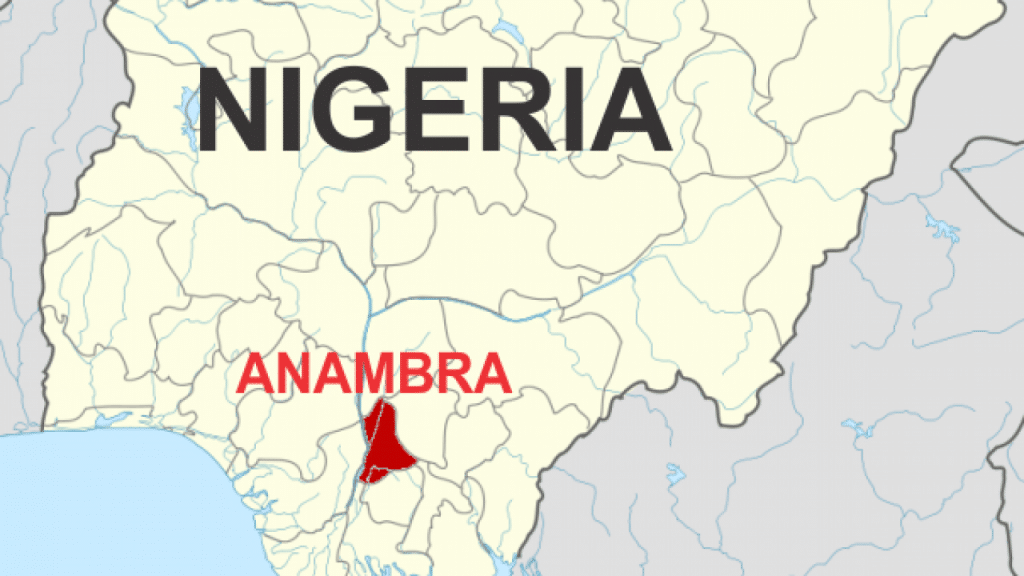Friday, 30 September 2022 is indelible in the mind of Francis Uyanne, a resident of Atani in Ogbaru Local Government Area (LGA) of Anambra State. That was the day he and his family members “walked on water.”

“We just woke up and found water everywhere in our house,” the father of four told PREMIUM TIMES.
The flood water destroyed valuables in the house and the family had to move out to the streets.
“The government provided IDP camps but it could not accommodate everybody. And if you leave your house to go and stay at the camp, bulgars will move into your house and cart away the valuables,” Mr Uyanne narrated.
The flood also submerged farms in Atani, a predominantly agrarian community where the mostly subsistent farmers grow cassava, yam, rice, pepper, potatoes and other food crops.
“Our farms were submerged. In fact, we experienced total loss at our farm,” Mr Uyanne said.
Data from the National Emergency Management Agency (NEMA) and the Anambra State Emergency Management Agency (ASEMA) shows that 729,046 people were affected by the flood in the state while 526,215 people were displaced in Anambra State by flood last year.
Ogbaru LGA had the largest number of the displaced people (204,339) people in the state. But a fresh disaster looms.
The Nigeria Hydrological Services Agency (NIHSA) and the Nigerian Meteorological Agency (NIMET) predict that 32 states, including Anambra and the Federal Capital Territory, will experience severe flooding again in 2023.

The residents of Atani are worried.
Many Rivers
Flooding in Anambra State is caused majorly by overflow of water from major rivers. The situation is exacerbated by climate change with increased and irregular rainfall.
Some of the major rivers are River Niger (affecting Ogbaru, Onitsha South and Onitsha North LGAs) and Omambala River (affecting Anambra West and Anambra East LGAs).
Promises unfulfilled
The state government had promised last year to help flood-affected communities. According to a Radio Nigeria report of 6 October 2022, the governor of Anambra State, Charles Soludo, said the state government was evacuating persons and providing health services.
Mr Soludo also promised the affected people relief materials.
Kogi AD
Dangote adbanner 728x90_2 (1)
But residents said the promise have not been fulfilled.
“We have not received anything,” a resident, Edith Nwabunwanne, told AnambraPeople.

“We still feel the psychological effect of the flood (of 2022). I do not want to experience such again, we are handicapped and we do not know what to do,” Mr Uyanne said.
He confirmed that they had been informed of the impending flood which is already affecting their farms and “causing us sleepless nights.”
He urged the government to provide IDP camps or holding centres including storage facilities to salvage the situation.
Like Mr Uyanne, Ngozi Onia said the floods plunged her family into hardship and debt.
Mrs Onia lost her farm produce, leaving her family with no crops to harvest. Their house was also affected but they could not leave it. “We did not know where to go, we had nowhere to go.
“We put a chair in the water and slept in it because we did not know where to go. We suffered greatly. I cried a lot, I was tired and I did not know where to take my children as the camps were filled and they soon fell sick. We could not eat because there was no cooking fuel, firewood or gas.
“We are hearing that the flood is coming back and it is already affecting yams which we just planted. We are now forced to harvest premature yam which yields no profit in the market.”
“The government should come to our aid, we are in so much debt,” she pleaded.
Mrs Nwabunwanne also lost her farm produce to the flood and was forced to live on the road due to lack of space at the IDP camps.

The flood also claimed mannny lives. Although the figures vary across the various government agencies, no fewer than 50 persons in Ogbaru died as a result of the flood.
Additionally, seedlings were lost, forcing farmers to travel to neighbouring Delta State to buy cassava for planting.
Mrs Nwabunwanne said the government needs to build more camps.
With her three children, Anwulika Godwin, a farmer and hairdresser, was forced to leave her home three times by flood last year.
“We moved when our home was flooded to another house that we paid for but were forced to move again.”
Mrs Godwin said she quit farming after losing everything to the flood. Her salon was also affected but she was able to retrieve some items.
“I had to borrow money to rebuild my shop but I have not been able to restock it.
Mrs Godwin fears the coming flood may again cause fatality in her community.
What Anambra government is doing
The state Commissioner for Information, Paul Nwosu, in a statement circulated in April outlined various safety measures residents of the state could take in the event of a flood.
He said the advisory was from the State Emergency Management Agency (SEMA). They asked residents to make concrete plans to harvest their crops, secure their belongings and evacuate to safe places like the IDP camps provided by the government.
Data from the International Organisation for Migration’s Displacement Tracking Matrix (IOM-DTM) shows that only eight per cent of the shelters in Anambra State are in good condition.
Christian Aburime, chief press secretary to the governor, told PREMIUM TIMES that the state government was working with the federal government to sensitise the public on the likelihood of another flood disaster more intense than that of last year.
“We are preparing the IDP camps, getting them ready so that it does not become a fire brigade approach when suddenly accosted by the disaster,” Mr Aburime said.
“I know that SEMA is working with the federal government to ensure that necessary actions are taken so we do not suffer similar damages like last year,” the governor’s spokesperson, said.
Flood and displacement inevitable – Anambra SEMA
The Executive Secretary of Anambra State Emergency Management Agency (SEMA), Paul Odenigbo, told PREMIUM TIMES that displacement of people is inevitable but the government would continue to mitigate the effect of the flood on the people.
“We do this by giving early warning sensitisation to flood-prone areas in the state. We are getting the holding centres ready to accommodate them when the flood comes,” he said.
Mr Odenigbo told this reporter that there are 27 holding centres (schools, town halls) in the state, noting that the floods are likely to come earlier this year than anticipated.
He said residents of flood-prone areas have been asked to prepare to leave their homes on the shortest possible notice.
“It will be incorrect to say that we do not have enough accommodation for people displaced as a result of the flood. We have 27 holding centres spread across the state. Maybe people who do not want to leave their own zone, they may make their own arrangements but there is no way I will know about that unless I am informed,” he said while responding to a question on the holding capacity of the centres.
He said schools and community town halls within the communities or in neighbouring communities were being used as holding centres (camps) because the government has yet to build designated holding centres for such purposes.
What other flood-prone states are doing
In the North-west region, the authorities have taken measures such as the dredging of rivers, public enlightenment and relocation of people from flood-prone areas.
In Kaduna, the state government said it has dredged River Kaduna as part of measures to reduce the annual flooding of the river and its tributaries.
The State Emergency Management Agency (KADSEMA) said it has identified people living along waterways, documented them, and commenced demolition of some of the houses, in collaboration with relevant agencies in the state.
Muhammed Mukaddas, KADSEMA executive secretary, said, following NiMet’s seasonal prediction of 2022 probable risks, 5,000 households were assessed and supported with N35,000 unconditional cash transfers each, to relocate to safety temporarily.
In Katsina, the governor, Dikko Radda, has promised to step up measures through awareness creation to prevent flood disasters.
In Kano, the State Emergency Management Agency (SEMA) said it was been monitoring and collaborating with relevant stakeholders on strategies and emergency response plans to mitigate flooding in the state.
“We have embarked on sensitisation campaigns on radio, television markets, the five emirate councils and communities across the 44 local government areas of the state to ensure they clear waterways to minimise flooding,” executive secretary of SEMA, Isyaku Kubarachi, said.
However, “beyond this, it is crucial that the government becomes proactive in its approach to this annual disaster, including identifying the reason for the intensity of the flood,’’ she said.
Mrs Dairo noted that once the issues are identified, it is essential that the government puts necessary measures in place to reduce the impact of floods in such communities such as providing adequate drainage systems and ensuring waterways are free of obstructions.
She added that the government should ensure it relocates affected farmers to new lands and subsidise seedlings/fertilisers for them. It should also intervene in the area of education and ensure displaced school children are enrolled in new schools to prevent escalation of the number of out-of-school children.
With experts forecasting that the rains will arrive earlier and with more intensity this year, Mr Uyanne and his neighbours can only pray for mercy from nature and the government.




